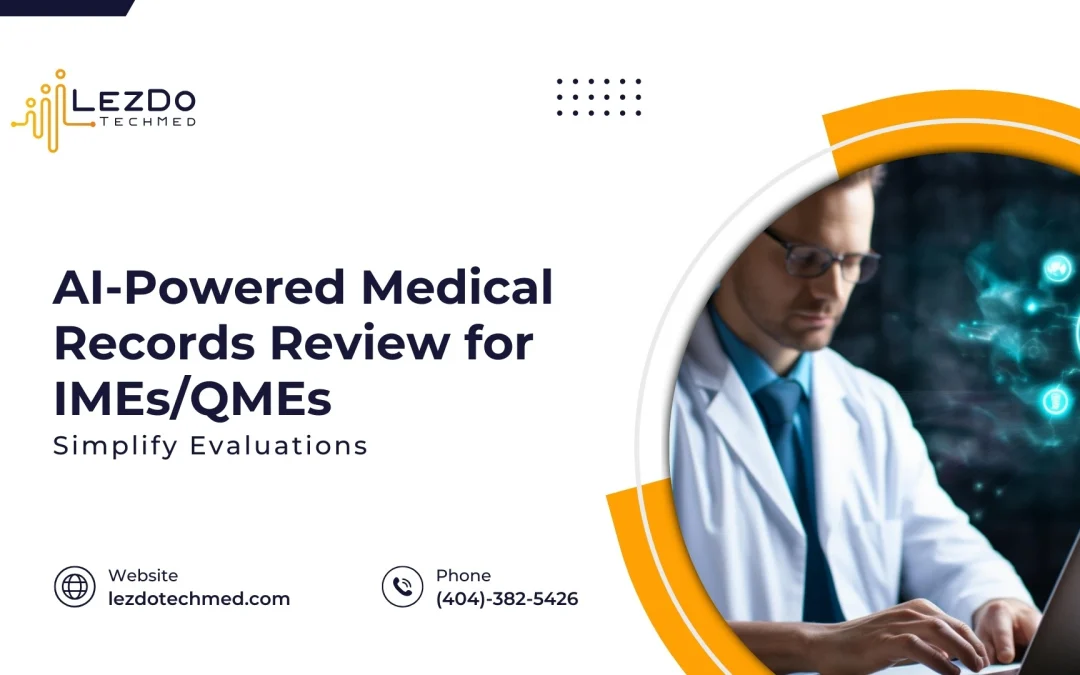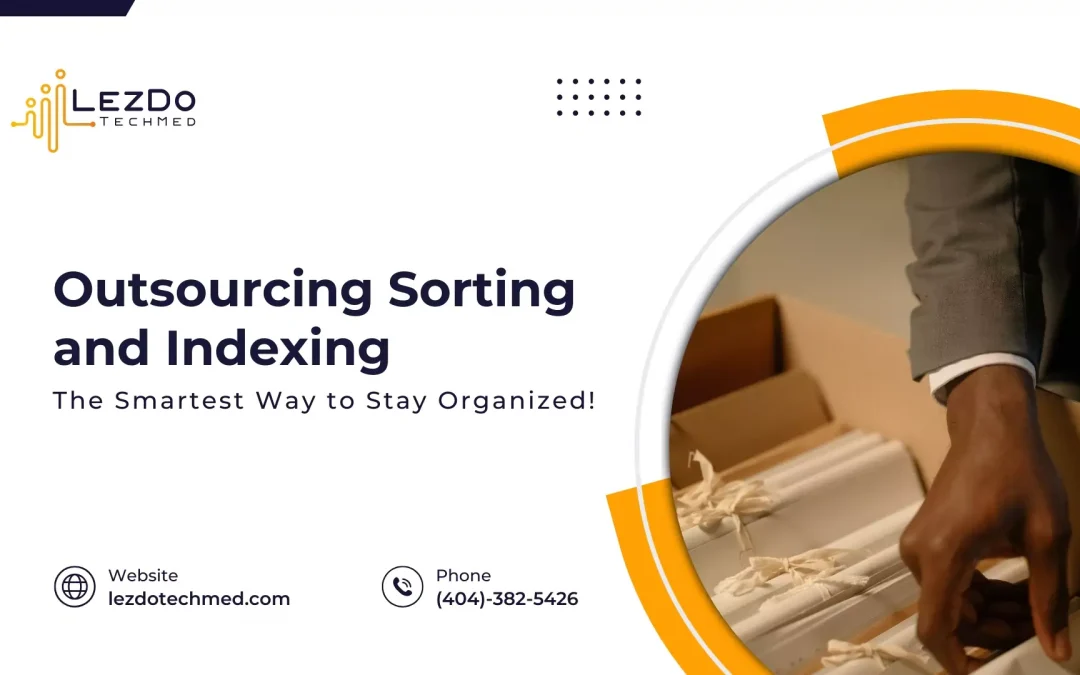Are you struggling with managing medical records efficiently?
Medical records are often voluminous, complex, and highly sensitive. As an IME, QME, or legal professional, do you find yourself overwhelmed by stacks of records that need to be sorted and indexed for case evaluations, insurance claims, and legal proceedings? Confused, whether to do it manually or automate it?
With medical record volumes increasing, choosing between manual and automated sorting and indexing is a crucial decision. Which method best suits your workflow? Let’s explore both options so you can make an informed choice.
What is Sorting & Indexing Medical Records?
Before exploring the best way to sort and index medical records, let’s first try to understand what sorting and indexing is.
Sorting means arranging medical records systematically by patient name, diagnosis, treatment date and other vital details. Indexing refers to categorizing and tagging medical records for easy and quick retrieval of vital information.
Based on the volume of medical records handled in legal and medical case evaluations, you have to decide whether to adopt manual or automated sorting and indexing. Let’s have an analysis of the pros and cons of both here.
Manual Sorting & Indexing of Medical Records: Is it Still Effective?
If you follow manual sorting and indexing, you may have a team of legal assistants, medical record managers, or administrative staff to digitally categorize medical records. Even with digital storage, some degree of manual organization remains necessary. But is this way still feasible for your process?
Benefits
- Human oversight for contextual understanding: Professionals can interpret handwritten notes, abbreviations, and unique case details. Whereas automated tools fail to recognize vital data in messy and unintelligible handwriting.
- Adaptability to case-specific needs: Every case is unique. Manual methods allow custom categorization for case-specifics, which are particularly useful for legal case evaluations and IME/QME assessments.
- Assured consistency: Human supervision helps identify inconsistencies in medical documentation, which can hinder case evaluations later. Automated tools might overlook such errors.
- Cost-efficient for small-scale firms: Law firms or independent medical evaluators handling low-volume medical records find manual sorting & indexing beneficial and cost-effective. They need not invest in highly expensive automation tools.
Drawbacks
- Time-consuming: Sorting and indexing medical records manually may take hours or even days of work. This can delay case evaluations and legal proceedings.
- Higher risk of human error: Errors in sorting and mislabeling can lead to delays and complications in case management.
- Difficult to scale up: When sorting records manually, you cannot keep the momentum in times of increasing workload. This may lead to delays in case evaluations and legal proceedings, resulting in missed deadlines.
- Expensive in the long run: When your workload grows, the labor costs too grow. You may need more staff to handle more records, leading to higher administrative expenses.
Automated Sorting & Indexing: Can Technology Lend Hands?
Automation is simplifying human tasks everywhere and medical record management is one among them. Automated systems use artificial intelligence (AI), machine learning, and specialized software to categorize and manage medical records efficiently. These systems integrate with case management software and electronic medical record (EMR) platforms to streamline workflows. However, the question is- whether it is suitable for you.
Benefits
- Speed and efficiency: By automating sorting and indexing, you can organize and retrieve thousands of medical records within seconds. Automation handles the task effortlessly, speeding up legal proceedings and case evaluations.
- Accuracy and consistency: AI-powered sorting & indexing medical records eliminates errors in categorizing and labeling medical records. It also ensures uniformity across medical records.
- Scalability: When your caseload increases, you need not worry as automation scales up the process for you and you need not seek more staff.
- Cost-efficiency: Though initial investment in automation tools is higher, in the long run, it can save you more bucks on labor costs.
- High data security: By using secure platforms, automated systems ensure data security compliance with HIPAA and other regulations.
Drawbacks
- High initial investment: Investing in automation software, training staff, and system integration can be highly costly. Smaller firms may not afford such expenses.
- Limitation in flexibility: While handling complex cases, AI may struggle with handwritten notes, unconventional formats, or incomplete documentation.
- Technology maintenance: Automated systems need regular updates, cybersecurity measures, and troubleshooting to keep the system running smoothly and maintain efficiency and security.
- Not ideal for smaller firms: If you handle a low volume of records, automation may not justify the investment.
Manual vs. Automated Sorting & Indexing: Which is Right for Your Practice?
Choosing between manual and automated sorting and indexing medical records depends on various factors.
Ask yourself these questions:
- How many medical records do you process monthly?- High or low volume?
- Is speed your priority? – Need faster turnaround or have more time?
- What’s your budget? – Willing to invest for long-run savings or need a cost-effective short-term solution?
- Do you require strict data security and compliance? – Are you handling sensitive cases or small-scale cases?
Now continue reading to get a clear idea:
- Volume of records: Firms and evaluators handling high-volume cases benefit from automation, while smaller firms may prefer manual sorting & indexing.
- Budget: Manual methods require minimal upfront costs but become expensive in the long run, while automation requires an initial investment but lowers costs long-term.
- Compliance: Automated sorting systems offer better security, audit trails, and compliance features for sensitive medical records.
- Time constraints: If quick turnaround is important, prefer automation.
- Integration with case management systems: If you already use case management software, automation can improve efficiency by integration.
Need another solution? Combine both!
Many IMEs, QMEs and law firms prefer combining manual and automated methods to utilize the best of both. Could this strategy work for you?
How does this work?
AI-assisted sorting & indexing and human oversight: Automated systems categorize and index records, while the human reviewers review and validate categories for accuracy. Give routine tasks to the AI, while leaving the complex cases with experts.
Machine learning-based data extraction: Let AI extract crucial data, and experts refine and interpret the data as needed.
Will AI systems advance to fully automate sorting and indexing in the future?
Technology is evolving even in handling medical record management. In the future, AI systems will better understand handwritten and complex documents, sort and index documents without errors and extract accurate data. Secure and tamper-proof record storage may become common with blockchain methods. Cloud-based medical record management can allow for more accurate document accessibility among law firms, IMEs and QMEs, eliminating the need for everyone to sort and index medical records for their use.
Conclusion: Your decision matters!
Both manual and automated sorting & indexing of medical records have their advantages for IMEs, QMEs and law firms. Manual methods offer flexibility and human oversight for unique and complex cases. However, if you prefer speed, accuracy, and scalability, automation becomes the best for high-volume operations. The best choice depends on your caseload, budget, and efficiency needs for better case outcomes and client satisfaction.
See Our Success Stories – Dive Into Our Case Studies.











